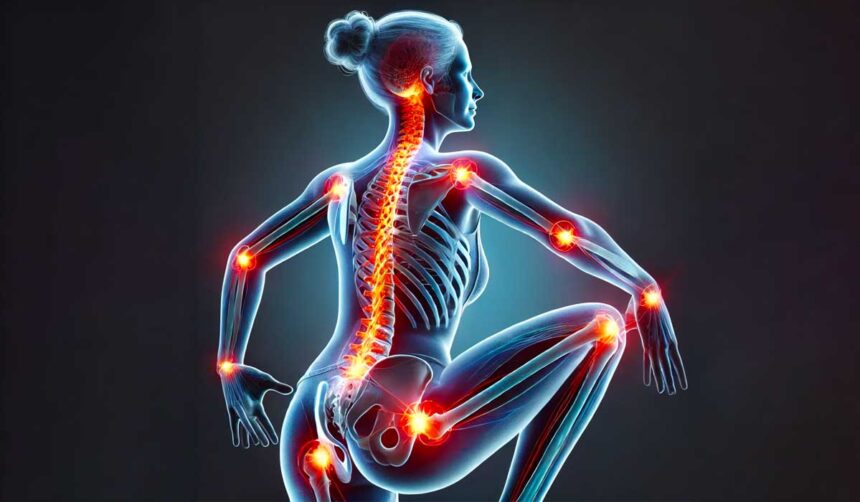Bridging Flexibility and Pain: Neuromyofascial Solutions for Hypermobility
Navigating the nuanced intersection between hypermobility and neuromyofascial pain has been a cornerstone of my practice. Hypermobile females, forming a substantial portion of the complex chronic pain cases I encounter, present a unique diagnostic challenge, particularly in the context of whiplash injuries. Their distinct physiological traits—such as remarkable flexibility and unusual softness of the skin—often mask the severity of their spinal injuries, making conventional diagnostic methods insufficient. This introduction is an invitation to explore the intricate relationship between hypermobility and spinal trauma, highlighting the imperative for specialized diagnostic and therapeutic strategies that cater specifically to the needs of hypermobile patients.
Illuminating the Path: My Pursuit to Address and Heal Neuromyofascial Pain in Hypermobility
A frequent patient type that I see in the clinic is the hypermobile female. While I do see hypermobile males, it is very uncommon. This is an important whiplash sub-category, as these patients are typically underdiagnosed. Hypermobile females represent about 30% of the complex chronic pain group in my practice.
Understanding Hypermobile Patients
- These patients often have a history of great flexibility, often having performed dance or ballet as children.
- They are natural dancers or gymnasts, able to perform splits and other moves easily.
- When injured, their skin appears softer and younger than average.
- They exhibit higher than normal range of motion (ROM) in their spine and joints, though this ROM may not be equally distributed.
Common Traits and Challenges
- Hypermobile individuals may dislocate or sublux joints, with common stories of ankle and shoulder injuries.
- On examination, they often lack the trigger point changes in muscles that are expected from injuries.
- X-rays and MRIs may underreport spinal injuries due to their loose joint structure.
Specialized Diagnostic Techniques
Using specialized tissue and spinal biopsy techniques, I can report that these individuals develop serious spinal injuries invisible to MRI but detectable through biopsy assessment. Untreated, these whiplash changes can cause more aberrant movement in the spine than in non-hypermobile individuals.
Spinal Myelopathic Syndrome (SMS)
After a whiplash event, significant injuries can affect the neck and upper back, causing a condition I call Spinal Myelopathic Syndrome (SMS), also referred to as spinal concussion syndrome. SMS can occur in anyone but is more likely in hypermobile females and is not easily seen on imaging. Symptoms resemble post-concussion syndrome with body aches affecting arms and legs without triggers or ROM loss.
Diagnostic and Treatment Approach
- Hypermobile individuals are at greater risk for long-term spinal complications after whiplash.
- Their natural hypermobility and lack of visible injuries on imaging make diagnosis difficult.
- Special bimanual examinations and biopsies confirm injuries, guiding tailored treatment for recovery.
The journey through understanding the intricate dynamics between hypermobility and neuromyofascial pain underscores a critical realization: the path to effective treatment is fraught with challenges yet ripe with potential for meaningful recovery. The insights gained from exploring the unique predicaments of hypermobile females illuminate the broader implications of neuromyofascial injuries and the necessity for a tailored approach to care. As we continue to explore and innovate within this field, my commitment to providing empathetic, patient-centered care offers a beacon of hope for those seeking relief from the often invisible torment of neuromyofascial pain.
Medical Disclaimer:
The information provided in this article is for educational and informational purposes only and is not intended as a substitute for professional medical advice, diagnosis, or treatment. Always seek the advice of your physician or another qualified health provider with any questions you may have regarding a medical condition or treatment and before undertaking a new health care regimen, regardless of your location. Never disregard professional medical advice or delay in seeking it because of something you have read on this website.
AI Disclaimer:
The images and abstracts featured in our blog posts are generated using artificial intelligence. While we strive for accuracy and relevance, there may be occasional discrepancies or errors. We appreciate your understanding and encourage readers to consider the context and intent behind these AI-generated elements.




